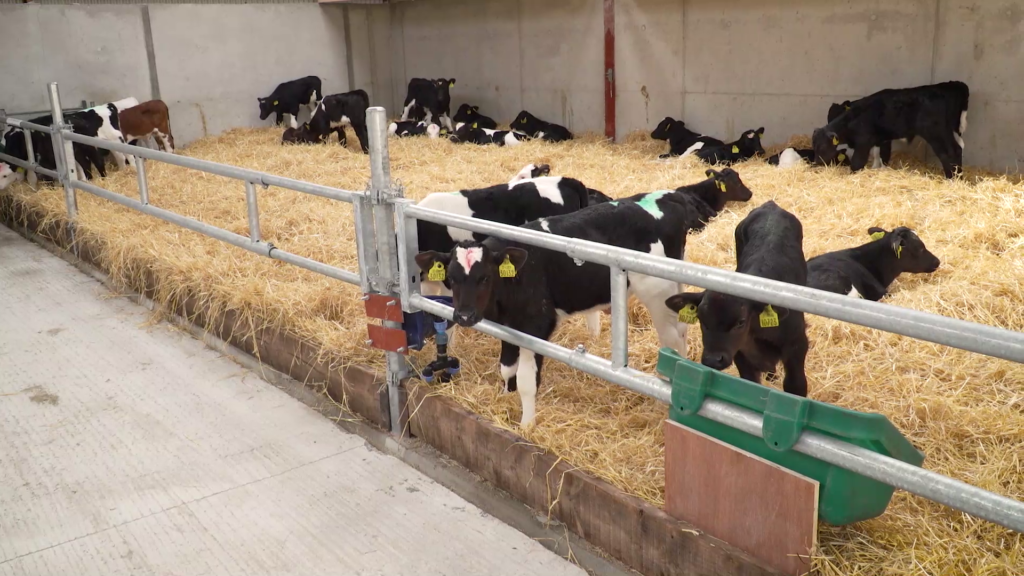Purchasing calves direct from dairy farmers can have many benefits for calf-to-beef finishers. Firstly, beef farmers know the health status of the dairy herd and they can be confident that the calf has received an adequate amount of colostrum.
They can also be confident that the calf has been managed correctly in terms of milk, calf creep and water in the early days of life, which allow the animal to reach its weight targets in the future months.
It may also be possible for the calf to have received its first vaccinations prior to arriving on the beef finisher’s farm.
One of the major problems on dairy calf-to-beef farms is the purchase of calves that do not reach their growth potential due to disease in the young calf’s life, which results in poor performance in the future.
Thomas and Peter O’Hanrahan – a father-and-son team – are participants in the Teagasc Green Acres Calf to Beef Programme and plan to purchase 180 Friesian, Aberdeen Angus, Hereford and Limousin-cross calves from the dairy herd this year.
Peter puts a lot of emphasis on buying the right calf. He is a firm believer in buying direct off farms and has built up good relationships with dairy farmers in his locality.
Peter purchases the calves from four different farmers within a 10-15 minute radius of the farm. He buys the calves in batches of 10-20 and can train this amount onto an automatic feeder easily.
“I have a relationship built up with four herdowners and I’ve been going back to them for the last couple of years; it suits me and it suits those farmers as well and it’s good to know where I’m buying from.
“You need a good relationship with who you are buying calves off and I try and stick with the same guys. You know the calves have got colostrum and you know where they came from; it just works a lot better for me,” Peter explained.
These relationships maximise the value of the calves to Peter and Thomas and, when they arrive on-farm, they are housed in the correct environment, provided with the correct nutrition and a vaccination programme is implemented.
Beef sires
The value of calves from the dairy herd can be improved by more careful selection of the beef sires used in the dairy herd and maximising the number of mature cows bred to beef sires.
Dr. Doreen Corridan from Munster Cattle Breeding Group outlined the benefits of a good relationship and also the possibility to influence the dairy herdowner on the type of sire used.
“It’s in the dairy herdowners interest that beef farmers are successful and they actually make a profit. The dairy herdowner will know each year that he/or she has a market for the calves at two weeks-of-age.
“And, what we are looking at, at the moment, is looking at the type of cow and how we can actually influence that cow to get beef farmers an animal that will leave a profit.
“We’re looking at the EBI to get the sweet spot between the maintenance of the cow and the beef value. We want the dairy herdowner to stay efficient, but there is a balance to be got between the maintenance and the beef figure.
“And then, to influence the type of beef bull he/she uses on the dairy cow. One thing dairy farmers could do is produce all their replacements from maiden heifers as much as possible, which will allow them to use a better type of beef bull on the cow.
“The type of beef bull that is more useful to beef farmers is the one that will leave a good carcass where all of them will meet the minimum specifications,” she concluded.


